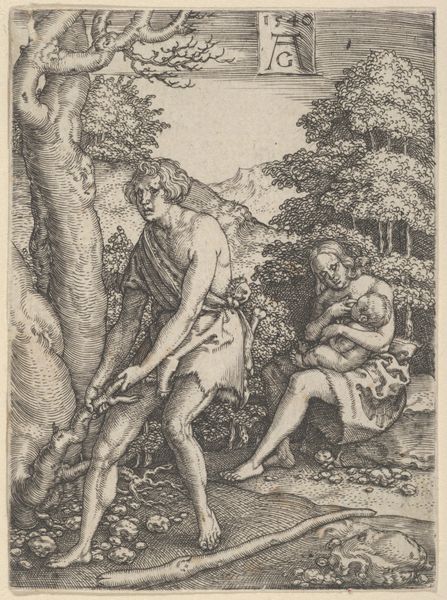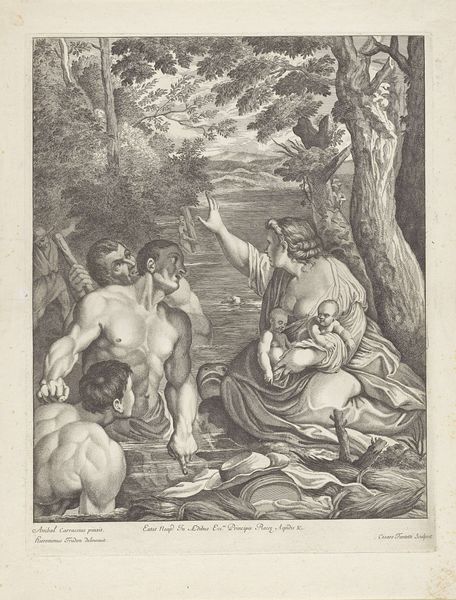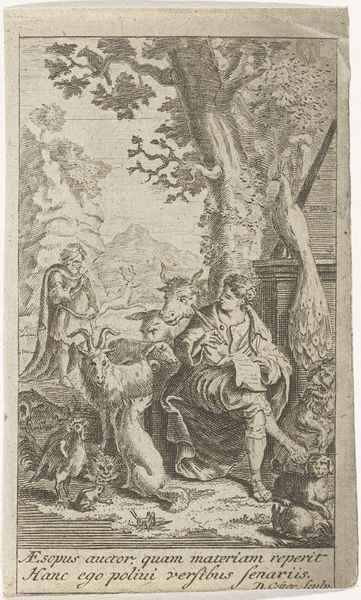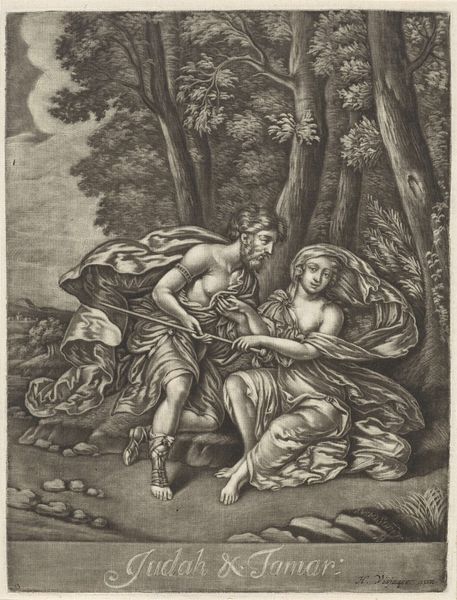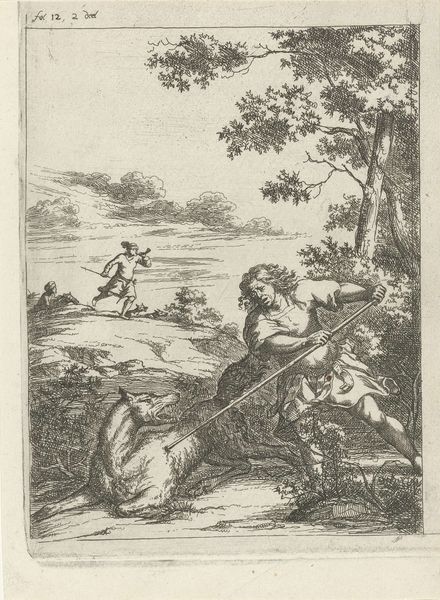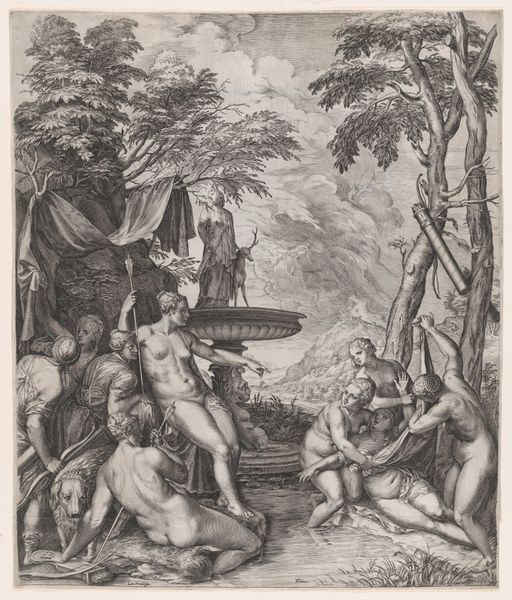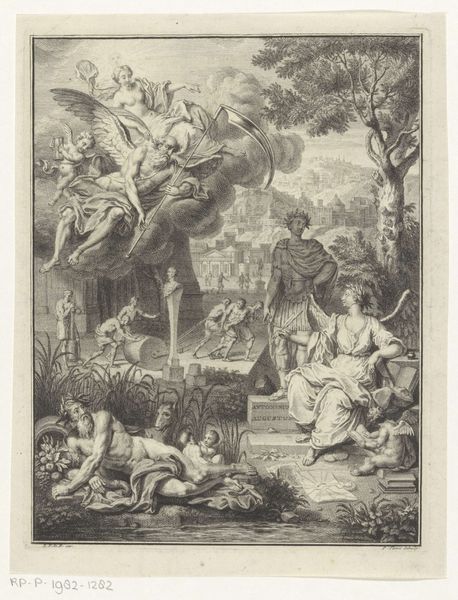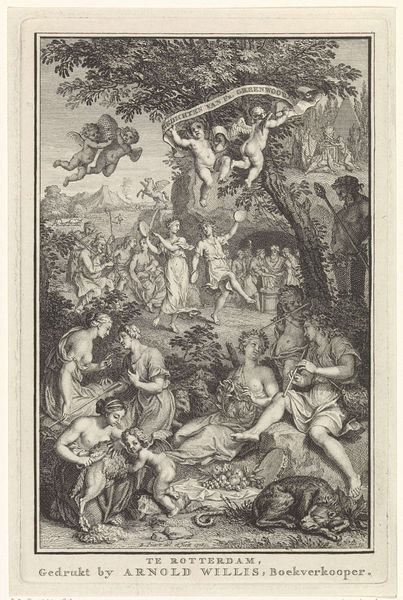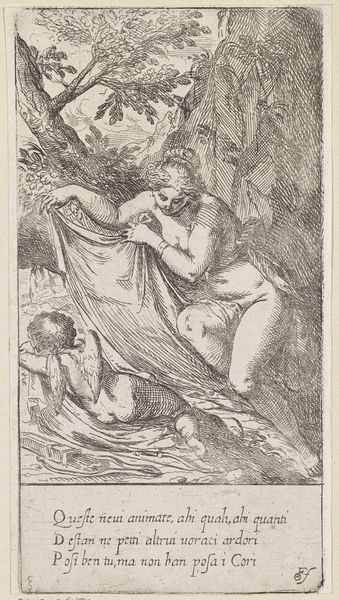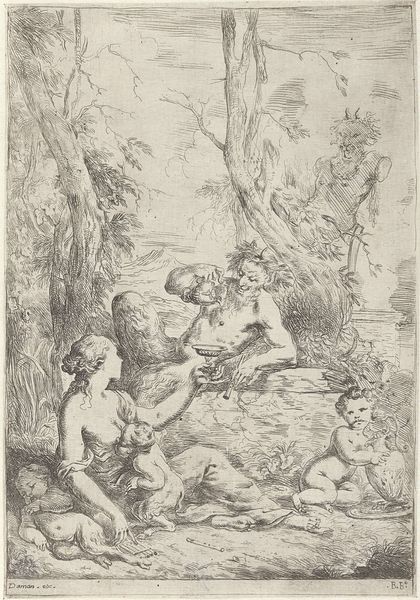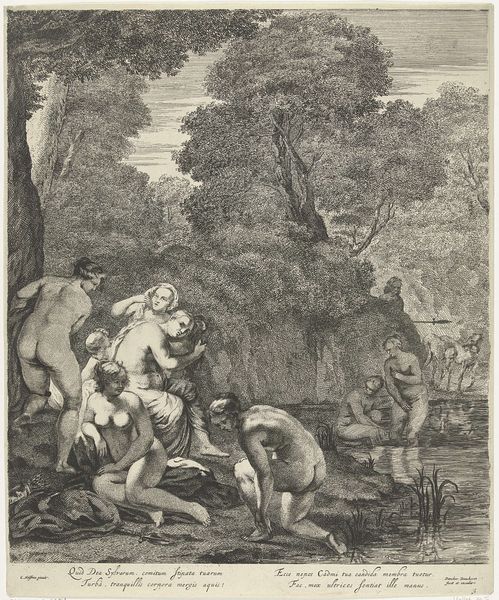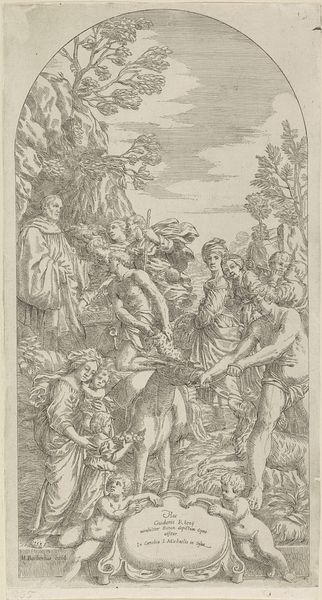
drawing, print, engraving
#
drawing
#
allegory
# print
#
mannerism
#
figuration
#
pencil drawing
#
history-painting
#
engraving
Dimensions: height 407 mm, width 310 mm
Copyright: Rijks Museum: Open Domain
Editor: We're looking at Giulio Fontana’s print "Religie wordt gered door Spanje" created sometime between 1553 and 1582. The medium is engraving. There's an allegorical feel, especially with the figures. What strikes me is the composition – a strong figure on the left contrasting with a more vulnerable one on the right. What do you see in this piece? Curator: Formally, the composition operates through a dialectic of verticality and horizontality. Note how the figure on the left with the standard provides a strong vertical axis, immediately drawing the eye upward. This is counterbalanced by the slumped posture of the figure on the right and the horizontal emphasis of the landscape. Observe also how the lines create varied textures, with the meticulously rendered drapery of the standing figure playing against the smoother skin tones elsewhere. Does this distribution of detail hold further meaning, would you say? Editor: It could signify strength versus vulnerability. But why such deliberate detail in some areas and less in others? Curator: Precisely! The visual hierarchy directs our attention and suggests a symbolic order. The artist guides our eye, telling us what to prioritize. Consider how light and shadow interact within the engraved lines – a dynamic interplay defining form. Are there elements within the engraving whose forms mirror or echo each other? Editor: Now that you mention it, the curve of the slumped figure and the twisted trunks of the tree... also the snake like creatures surrounding her. Curator: Good observation. This mirroring of forms could imply a symbolic connection. I believe a further study of semiotics of forms and symbolic space might illuminate this piece further, as a possible avenue of investigation. Editor: This has given me a lot to think about. I was so focused on the narrative, but I see how important it is to consider these compositional and formal choices. Curator: Indeed. It is by carefully deconstructing the artistic language of the work that we arrive at its deeper understanding.
Comments
No comments
Be the first to comment and join the conversation on the ultimate creative platform.
